A Quick, Straightforward Guide to Playing Harmonics
Learn how to master natural, tap, and harp harmonics.
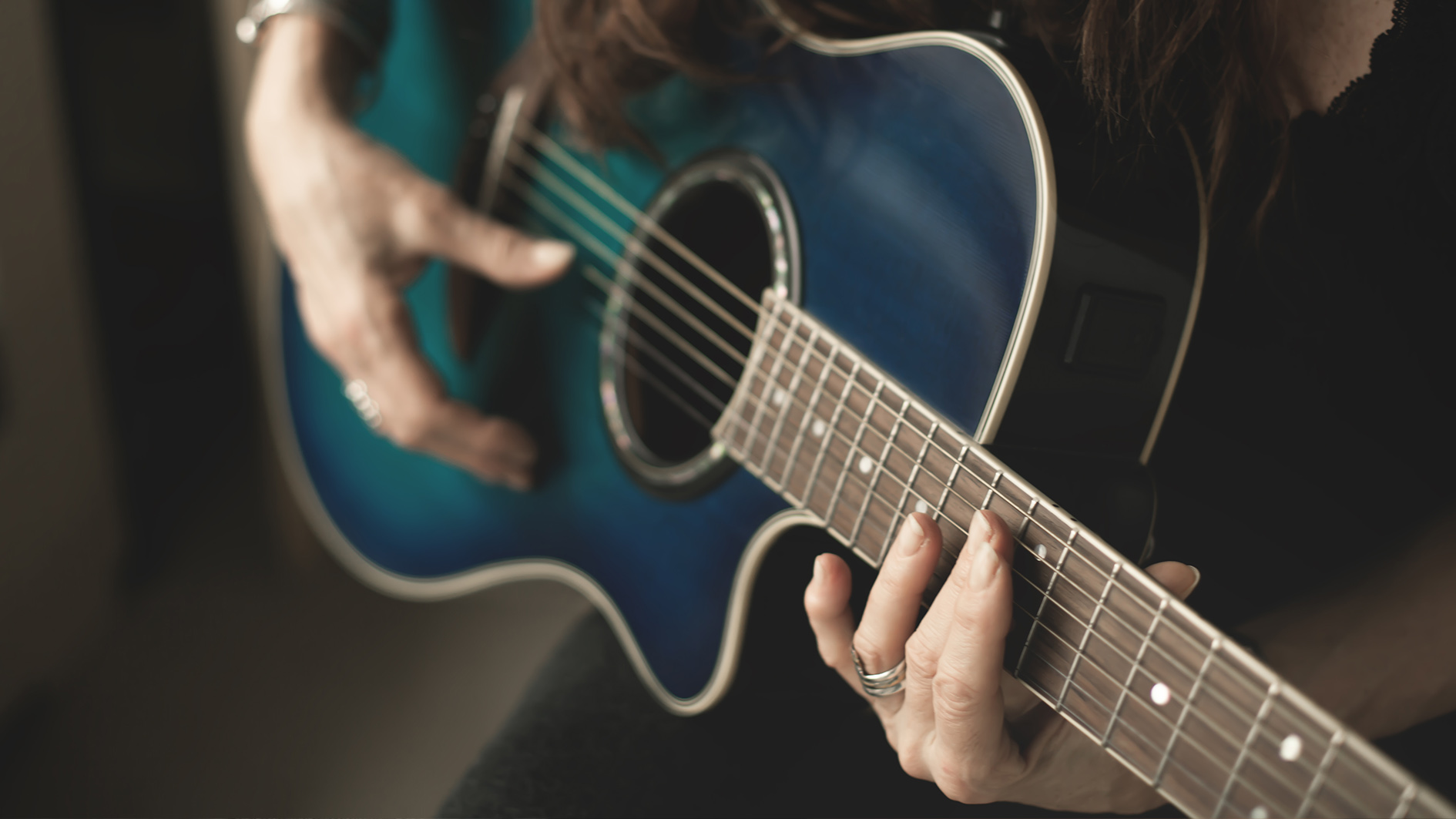
Heard in everything from the scorching lead guitar work of Eddie Van Halen to the delay-drenched ambience of U2's The Edge, harmonics are integral to textural guitar playing.
Interestingly, every time a note is struck on the guitar, harmonics are generated by the string's vibration. The loudest element is called the fundamental, or the primary note. So getting a harmonic to sound on the guitar is simply a matter of deadening the fundamental, there by allowing the harmonic to ring out.
Natural harmonics are the most commonly played harmonics on the guitar; they are displayed in their most accessible locations – frets 12, 7, and 5 – in Figure 1.
When executing these harmonics, place your fret-hand finger directly over the fret wire – not behind the fret, as you would when fingering a regular note. Lightly touch the string and then pick it. After that, remove your fret hand finger, allowing the harmonic to ring freely. You should get a chime-like sound.
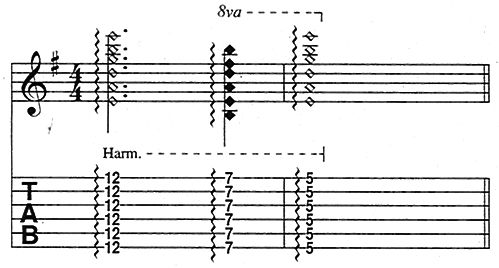
Harmonics are often used in combination with single-note lines and chords. In Figure 2A, play the 12th-fret harmonics with your 3rd finger and the 5th-fret harmonics with either your 3rd or 2nd finger.
Best played with your ring finger, the 7th-fret harmonics in Figure 2B outline a D major triad. Figure 2C is a tasty lead lick in the style of Eddie Van Halen.
To execute the whammy-bar dive – one of Eddie's trademarks – pick the open 3rd string and immediately depress the bar about 2-l/2 steps. Then, as you release the bar, lightly touch the string above the 5th fret (without picking it).
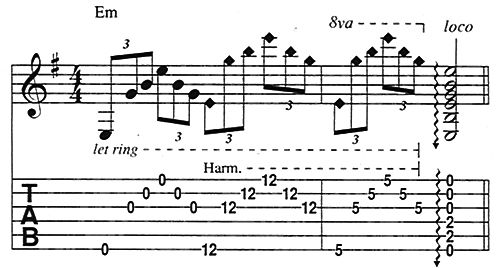
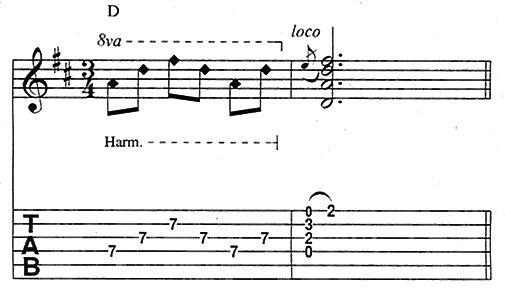
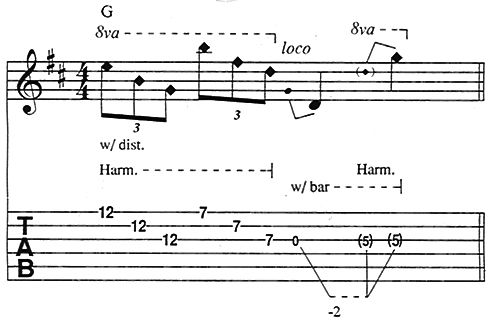
Natural harmonics can also be played at other locations. Fourth-fret harmonics [Figure 3], which sound two octaves and a major 3rd above the fundamental, can be heard in Rush's "Red Barchetta." (Note: 9th-fret harmonics are identical in pitch to 4th-fret fret harmonics.)
When playing through Figure 3, keep your fret hand mainly in 5th position – use your index finger for the 4th-fret harmonics and your pinky for the 12th-fret harmonics.

Two other popular techniques are tap harmonics and harp harmonics, both of which, unlike natural harmonics, involve fretted notes.
The four chord shapes in Figure 4A drive the tap- and harp-harmonic sequences of Figure 4B. To play the latter example with tap harmonics, keep each chord shape fretted for one bar and, with your pick-hand index finger, tap each note indicated in parentheses, directly above the fretwire.
When properly executed, Figure 4B's harmonics (both types) will sound an octave above the fretted notes. To play the figure with harp harmonics, again hold each chord shape for one bar, lightly place your pick hand's index finger over the fretwire at each note in parentheses and pluck the string with your pick-hand thumb.


Get The Pick Newsletter
All the latest guitar news, interviews, lessons, reviews, deals and more, direct to your inbox!
Guitar Player is the world’s most comprehensive, trusted and insightful guitar publication for passionate guitarists and active musicians of all ages. Guitar Player magazine is published 13 times a year in print and digital formats. The magazine was established in 1967 and is the world's oldest guitar magazine. When "Guitar Player Staff" is credited as the author, it's usually because more than one author on the team has created the story.
“Write for five minutes a day. I mean, who can’t manage that?” Mike Stern's top five guitar tips include one simple fix to help you develop your personal guitar style
"It’s like you’re making a statement. And you never know where it’ll lead." Pete Thorn shares the tip that convinced Joe Satriani he was the right guitarist for the SatchVai Band










